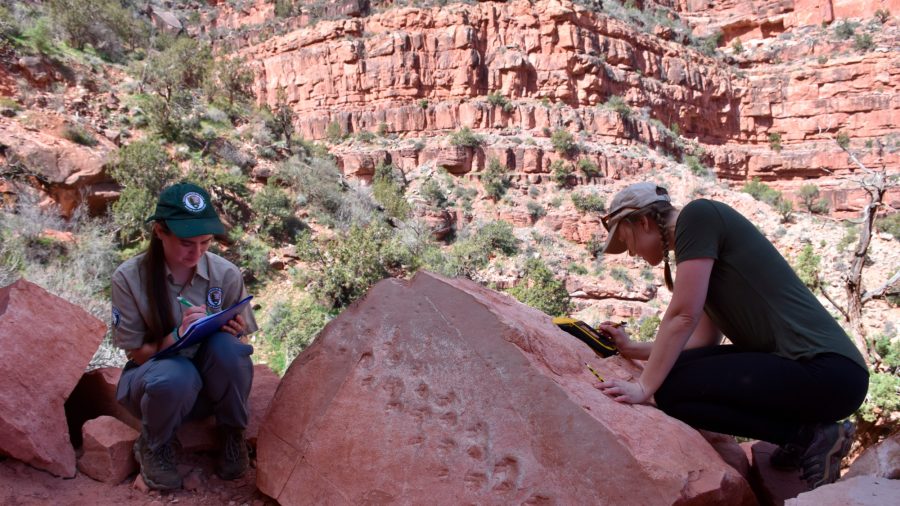FLAGSTAFF, Ariz.—It’s something like a modern-day chuckwalla, strolling in sand dunes on an island in what now is the Grand Canyon region.
That’s how Steve Rowland, professor emeritus of geology at the University of Nevada, Las Vegas, and his fellow researchers interpret fossil footprints that were revealed in a rockfall near a popular Grand Canyon hiking trail. They estimate the tracks are 313 million years old, give or take a half-million years.

Rowland first heard about the footprints from a Norwegian geology professor, Allan Krill, who was hiking at the Grand Canyon in 2016 with his students and sent Rowland a photo.
Rowland made out claw marks common among reptiles in the 28 footprints, which he said help tease out the scarce skeletal record. Some of the earliest bones of similar animals that lay eggs outside the water were found in Nova Scotia around the same time the creatures would have been in what’s now northern Arizona, Rowland said.
Similar tracks elsewhere largely are found in coal beds, not sand dunes, he said.
“You could always learn more, and we certainly would like to find more tracks of those same animals,” he said.
The rock fell from the Manakacha Formation, made up of sandstone, limestone, and mudstone that points to it being a onetime coastal plain when Arizona was near the western edge of the supercontinent, Pangaea. Dinosaurs weren’t around yet.
Officials at the Grand Canyon are trying to determine what to do with the rock. It weighs hundreds of pounds and is in plain view along the Bright Angel Trail. Another part of the rock also has footprints but wasn’t studied extensively.
The Grand Canyon has talked about creating a trail-side display or flying the rock out and into a museum, which would be costlier, Nebel said.
“A lot of people walk by it and never see it,” he said. “Scientists, we have trained eyes. Now that they know something’s there, it will draw more interest.”
By Felicia Fonseca


